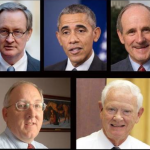Courts nationwide are facing serious rationing, but a Tampa-area regional justice system is offering some details of its crisis. The info came as county commissioners are debating new facilities. But the area’s chief judge says that won’t help much because “… we can build additional courtrooms but nothing’s going to happen unless we have more judges to oversee them… we haven’t had a new judge in 10 years. Get the (state) Legislature to give us more judges.”
At issue is Florida’s 6th Judicial Circuit, which serves fast-goring Pasco and Pinellas counties The Tampa Bay Tribune explained that the district is “Florida’s third-largest court system. It has 69 judges to oversee all criminal, civil, appellate, family, traffic and small claims court cases. There are seven county court judges and 13 circuit judges assigned to handle cases at the New Port Richey and Dade City courthouses. In 2013 — the most recent figures available — those 20 Pasco County judges handled 24,069 circuit court cases and 41,733 county court cases. And the caseload keeps growing.”
One judge told county officials that it takes a year just to get a hearing on a divorce case







